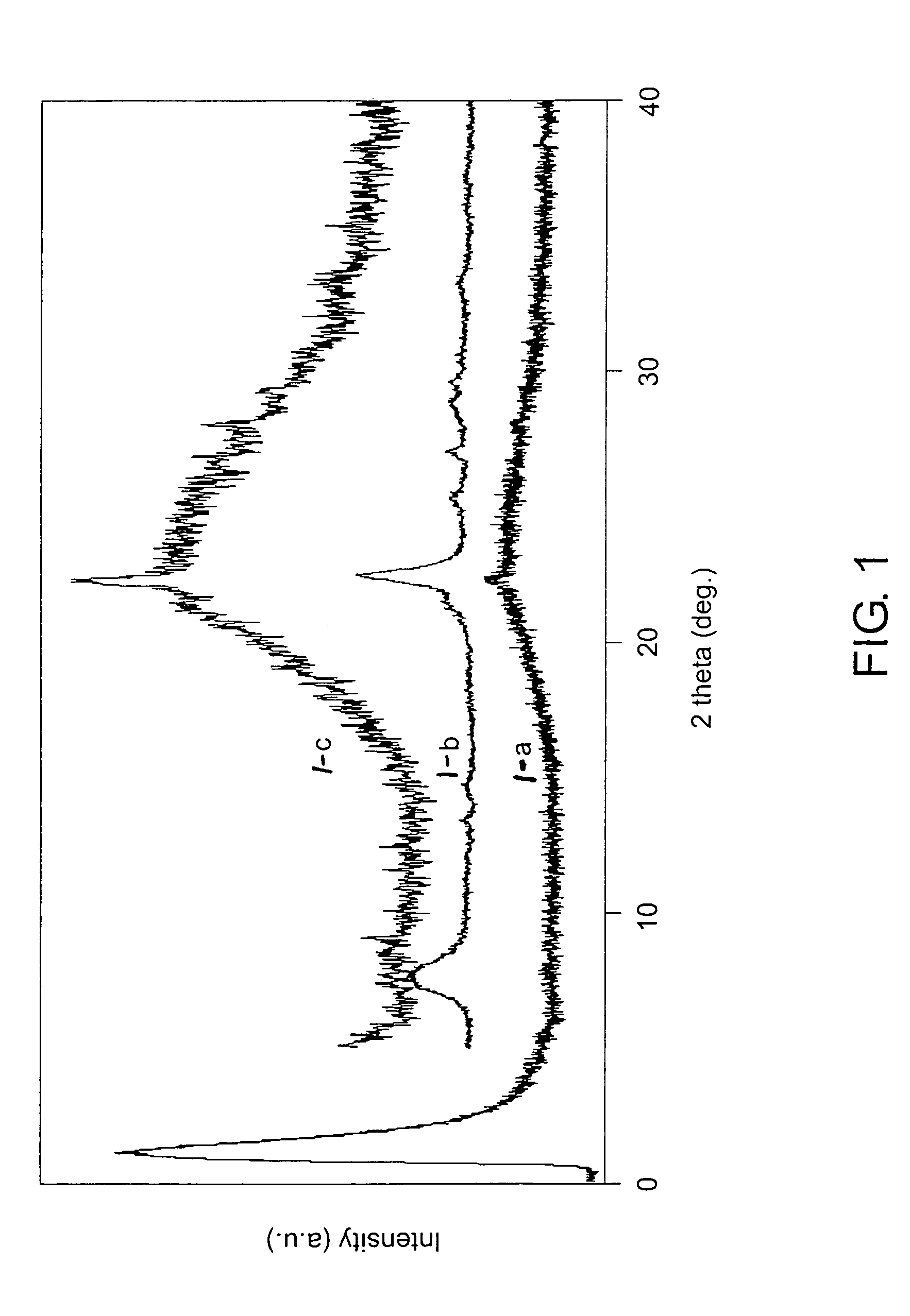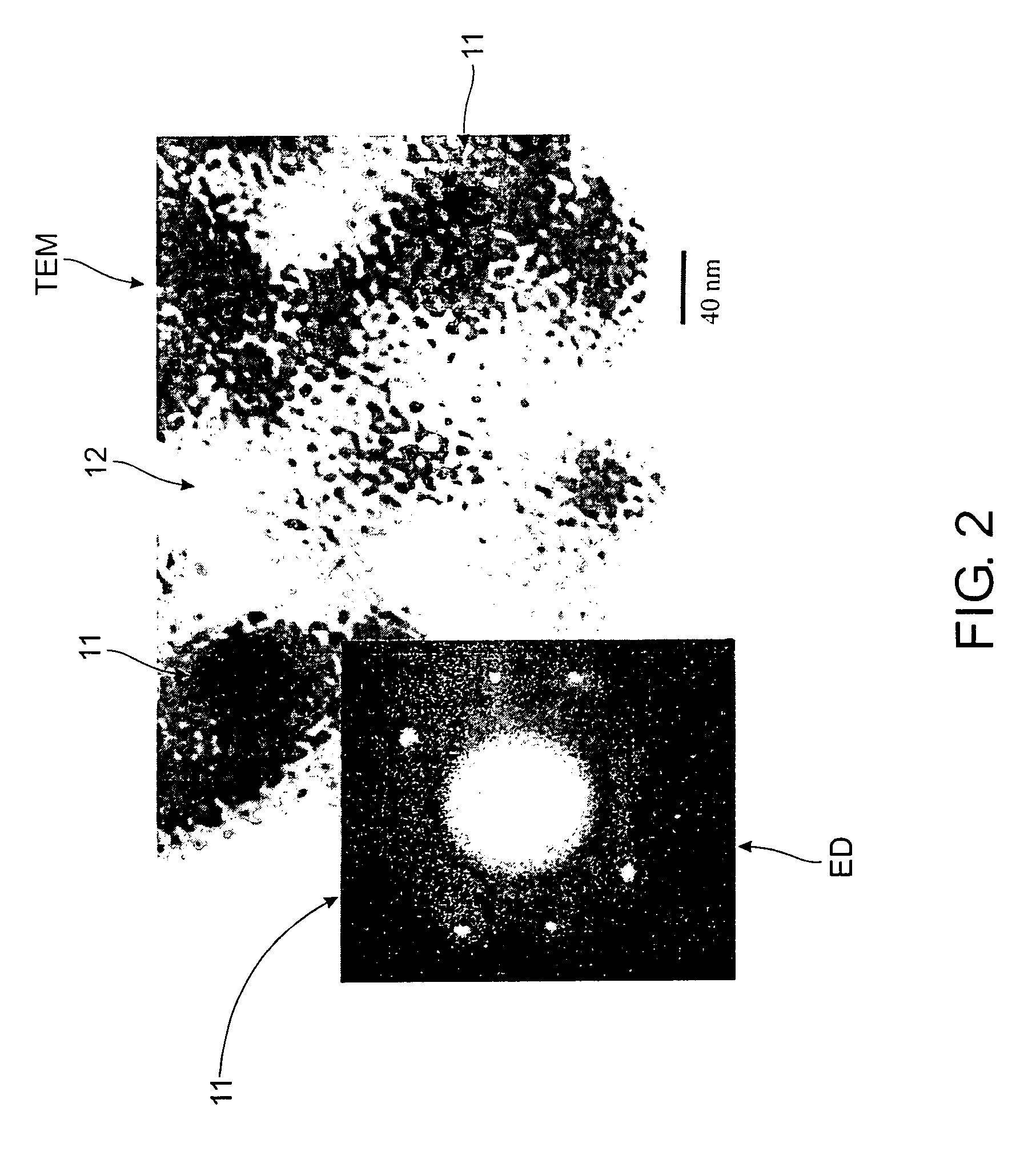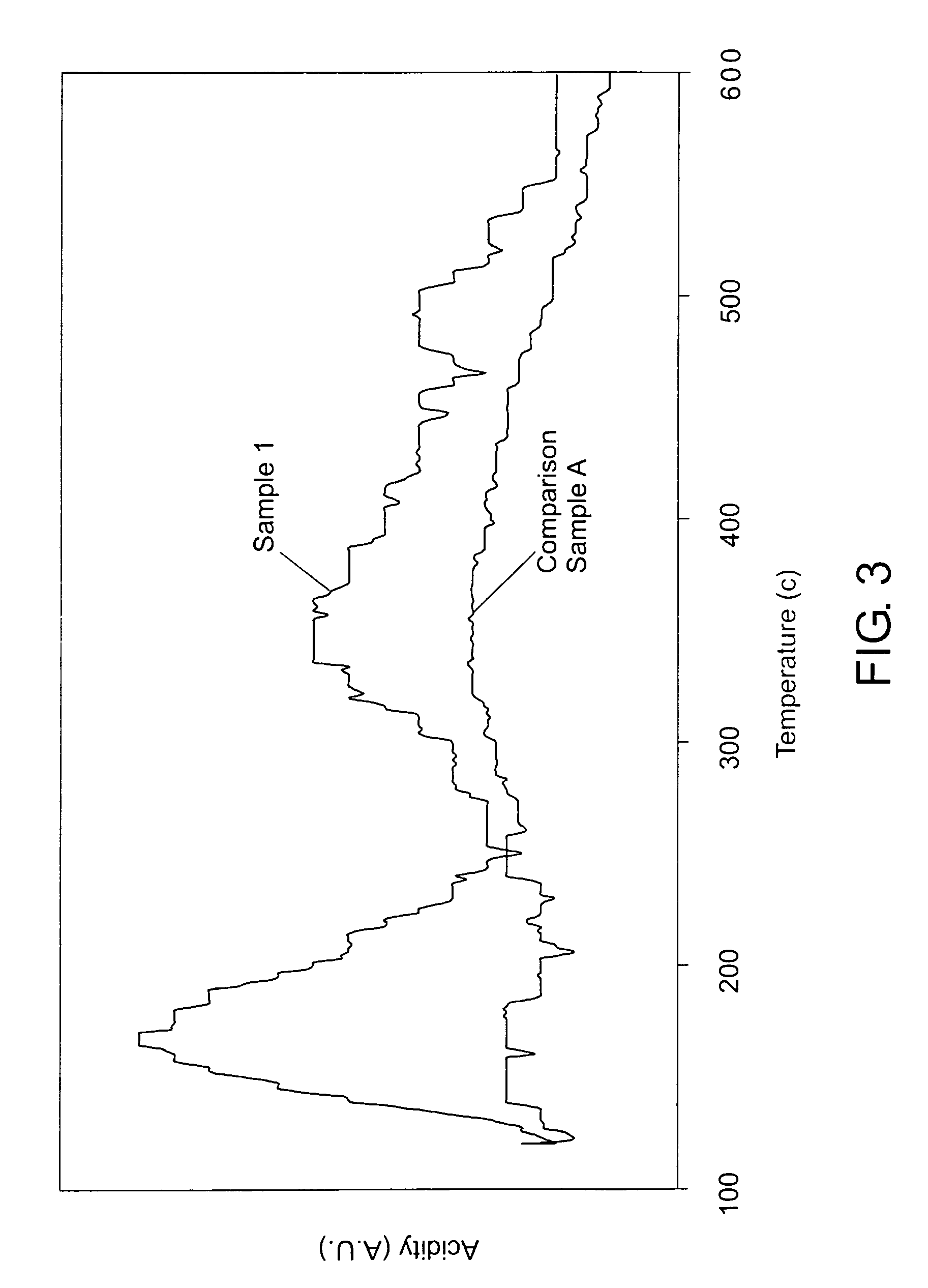Zeolite composite, method for making and catalytic application thereof
a technology of zeolite and composites, applied in the field of microporous zeolite embedded in a mesoporous support, can solve the problems of pressure drop, reduced catalyst utilization, and small zeolite catalyst particles that cannot be directly used, and achieve the effect of facilitating transpor
- Summary
- Abstract
- Description
- Claims
- Application Information
AI Technical Summary
Benefits of technology
Problems solved by technology
Method used
Image
Examples
example 1
[0053]First, 1.5 parts calcined zeolite beta with an Si / Al molar ratio of 25 and an average particle size of 1 μm were suspended in 16.3 parts water and stirred for 30 minutes. Then 20.3 parts tetraethylorthosilicate (TEOS) were added to the suspension with stirring. After continuous stirring for another 30 minutes, 9.3 parts triethanolamine were added. After stirring again for another 30 minutes, 4.0 parts tetraethylammonium hydroxide aqueous solution (35% solution available from Aldrich) were added drop-wise to the mixture to increase the pH. After stirring for about 2 hours, the mixture formed a thick non-flowing gel. This gel was aged at room temperature under static conditions for 17 hours. Next, the gel was dried in air at 100° C. for 28 hours. The dried gel was transferred into an autoclave and hydrothermally treated at 170° C. for 17.5 hours. Finally, it was calcined at 600° C. for 10 hours in air with a ramp rate of 1° C. / min.
[0054]The final product was designated as Sample...
example 2
[0059]First, 3.4 parts calcined zeolite beta with an Si / Al ratio of 150 and an average particle size of 0.2 μm were suspended in 85.0 parts water and stirred for 30 minutes. Then 105.8 parts TEOS were added to the suspension with stirring. After continuous stirring for another 30 minutes, 38.3 parts triethanolamine were added. After stirring again for another 30 minutes, 20.9 parts tetraethylammonium hydroxide aqueous solution (35%) were added drop-wise to the mixture. After stirring for about 2 hours the mixture turned into a thick non-flowing gel. This gel was aged at room temperature under static conditions for 24 hours. Next, the gel was dried in air at 98–100° C. for 24 hours. The dried gel was transferred into autoclaves and hydrothermally treated at 180° C. for 4 hours. Finally, it was calcined at 600° C. for 10 hours in air with a ramp rate of 1° C. / min. The XRD pattern of the resultant product, designated as Sample 2, is shown in FIG. 5. There was about 10 wt % zeolite beta...
example 3
[0060]First, 4.6 parts calcined zeolite beta with an Si / Al ratio of 150 and an average particle size of 0.2 μm were suspended in 51.02 parts water and stirred for 30 minutes. Then 23.0 parts triethanolamine were added to the suspension with stirring. After continuous stirring for another 30 minutes, 63.5 parts TEOS were added. After stirring again for another 30 minutes, 12.6 parts tetraethylammonium hydroxide aqueous solution (35%) were added drop-wise to the mixture. After stirring for about 2 hours, the mixture formed a thick, non-flowing gel. This gel was aged at room temperature under static conditions for 24 hours. Next, the gel was dried in air at 100° C. for 24 hours. The dried gel was transferred into autoclaves and hydrothermally treated at 180° C. for 4 hours. Finally, it was calcined at 600° C. for 10 hours in air with a ramp rate of 1° C. / min. The XRD pattern of the resultant product, designated as Sample 3, is shown in FIG. 5, which clearly shows two characteristic pea...
PUM
| Property | Measurement | Unit |
|---|---|---|
| boiling point | aaaaa | aaaaa |
| temperature | aaaaa | aaaaa |
| temperature | aaaaa | aaaaa |
Abstract
Description
Claims
Application Information
 Login to View More
Login to View More - R&D
- Intellectual Property
- Life Sciences
- Materials
- Tech Scout
- Unparalleled Data Quality
- Higher Quality Content
- 60% Fewer Hallucinations
Browse by: Latest US Patents, China's latest patents, Technical Efficacy Thesaurus, Application Domain, Technology Topic, Popular Technical Reports.
© 2025 PatSnap. All rights reserved.Legal|Privacy policy|Modern Slavery Act Transparency Statement|Sitemap|About US| Contact US: help@patsnap.com



